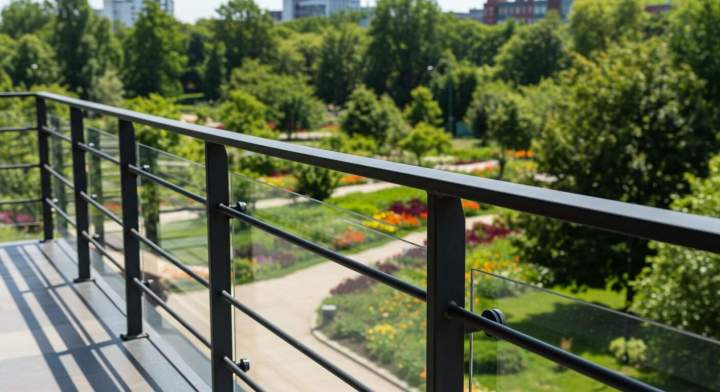Different Types of Safety Railing Systems
Safety Railing Linkeo / April 22, 2025

Overview of Safety Railing Systems
Safety railings are designed to protect individuals from potential hazards associated with elevated surfaces, open edges, and stairways. They come in various forms and materials, each tailored to specific environments and safety requirements. Understanding the different types of safety railings can help in selecting the most appropriate system for your application.
Safety Railing Systems
Guardrails
Guardrails are one of the most common types of safety railing systems. They are typically used in both construction and commercial settings to prevent falls from elevated surfaces.
- Material: guardrails can be made from metal, wood, or plastic.
- Height: most regulations require guardrails to be at least 42 inches high.
- Applications: commonly used on rooftops, balconies, and stairways.
Advantages :
- Provides a strong barrier against falls.
- Can be customized to fit various architectural designs.
Handrails
Handrails are often used alongside staircases and ramps to assist individuals in maintaining balance and support while navigating elevation changes.
- Material: common materials include stainless steel, aluminum, and wood.
- Height: standard handrail height is usually around 34 to 38 inches.
- Applications: widely used in residential, commercial, and public buildings.
Advantages:
- Enhances accessibility for people with mobility challenges.
- Can be installed in various styles to match aesthetic preferences.
Safety Railing Systems for Industrial Use
In industrial settings, safety railing systems are crucial for protecting workers near machinery and loading docks.
- Types: includes barriers, toe boards, and safety gates.
- Material: often constructed from heavy-duty steel or reinforced plastics.
- Applications: factories, warehouses, and construction sites.
Advantages:
- Designed to withstand heavy impacts and harsh environments.
- Customizable for specific industrial needs.
Temporary Safety Railing Systems
Temporary safety railings are essential during construction or maintenance work where permanent railings are not yet installed.
- Material: typically made from lightweight materials such as plastic or aluminum.
- Height: must adhere to safety regulations similar to permanent systems.
- Applications: construction sites, temporary event spaces, and maintenance areas.
Advantages:
- Easy to install and dismantle as needed.
- Cost-effective for short-term use.
Key Considerations When Choosing Safety Railing Systems
Selecting the right safety railing system involves several factors that should be carefully evaluated:
Compliance with Regulations
Safety railings must comply with local, state and federal safety regulations. Ensuring compliance is vital for legal protection and worker safety.
Environmental Conditions
Consider the environment where the railings will be installed. For instance:
- Outdoor Settings: materials must be weather-resistant.
- Industrial Areas: choose durable materials that can withstand potential impacts.
Aesthetic Considerations
Safety railings are often part of the overall design of a building. Selecting a system that complements the architectural style can enhance both safety and aesthetic appeal.
Budget Constraints
While safety is paramount, budget considerations also play a crucial role in decision-making. Temporary systems may be more budget-friendly for short-term needs, while permanent solutions may require a higher initial investment but offer long-term benefits.
Safety railing systems are indispensable for ensuring the safety of individuals in various environments. By understanding the different types, applications, and considerations involved in selecting these systems, professionals can create safer working and public spaces.
